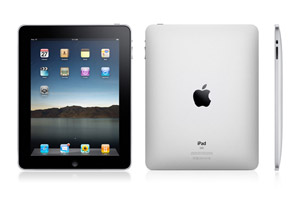 I recently carried out a survey of newspaper advertisements and i was shocked to learn that the majority are solely based on unsentimental logic and product specifications that do very little to tap into the power of consumers’ emotions.
I recently carried out a survey of newspaper advertisements and i was shocked to learn that the majority are solely based on unsentimental logic and product specifications that do very little to tap into the power of consumers’ emotions.
Upon reflection, I also realised that the marketing communication put out by a number of companies is dry and detached and thus incapable of producing the intended responses within the target audience.
This is a disturbing trend that goes against the tenets of the winning formula of emotional branding. According to a Wikipedia definition, “emotional branding is a term used within marketing communication that refers to the practice of building brands that appeal directly to a consumer’s emotional state, needs and aspirations.”
Basically, emotional branding is the practice of creating a love affair between consumers and a product and it is based on the understanding that human actions are mostly driven by emotion and not by reason.
In other words, the heart is more influential than the head. The fate of Arsenal supporters demonstrate this. Even though their club has performed poorly for a team of its stature, the Gunners supporters still love their club to bits.
Why didn’t they jump ship and join better performing teams like Manchester City or Real Madrid for instance?
The fans can’t do this because of the emotional attachment they have with the club that can be traced back to the glorious days of the Thierry Henry-led “Invincibles” who totally dominated the English Premier League. Again, its a matter of emotions versus reason. (By the way i am a Gunner for life!!)
Emotional brand creates the “I am-with-brand-X-no-matter-what-happens!” mentality.
Marketers should therefore naturally aspire to create strong these strong emotive connections between consumers and their brands as it will lead to the anticipated business results.
Emotional branding centres on building connections and relationships between consumers and brands. Branding is all about “people, emotions and relationships” and it is bound to achieve fractional success if it is treated differently.
Advertisements and marketing communication should appeal to the emotions of the consumers to enable it to trigger the desired consumer behaviour like a purchase or brand loyalty. This is something that tech giants Apple have ingrained in their DNA from the earliest Apple ad campaigns that redefined branding in tech consumerism.
Forbes.com published an article titled “The most unforgettable ads of 2013” in which the following claim is made. “Truly memorable ad campaigns create a visceral response – one of joy, wonder, shock, inspiration, motivation, compassion or surprise. If this is achieved, chances will break through and stay with you”.
According to Marc Gobe, author of Emotional Branding: The New Paradigm for Connecting Brands to People “consumers don’t remember messages, they remember moments.”He went on further to suggest “People may not remember exactly what you did, or what you said, but they will always remember how you made them feel.”
In the advent of social media, the consumers are the ones actively seeking brands that fulfill their emotional needs, support their aspirations and allay their fears. Not only do they seek these active emotional connections, they also tend to share their emotional experiences with a brand on their online communities on Facebook, Twitter or Yookos.
This social sharing of emotional experiences is a desired sweet spot because brands with strong bonds with their customers reap the benefits of word of mouth marketing.
Peer-to-peer recommendations that come via word of mouth marketing are powerful influencers of purchase behaviour as people trust and act upon their friends’ recommendations more than their compliance with advertisements.
In the aggressively competitive world of instant messaging WhatsApp has rose to prominence largely by referrals. With the absence of an advertising war chest the application now boasts 600 million users, and was bought for $19 billion. The creators struck the right emotional branding chord through its ease of use, simple UI and platform crossover advantage.
Coca Cola is another brand that effectively leverages emotional branding in its communication and advertisements. I remember the advert in which a then unknown Tyrese enters a bus singing along to music from his Walkman (remember those) and sat behind a very sultry lady.
They then lock eyes and laugh in a carefree way that stole the hearts of many young people who were their target audience. Coca Cola still remains the beverage for cool people of its emotive story-telling!
How does your brand fare? Let’s talk about this and i can show you some interesting emotional branding strategies.

One response
As a person working in the industry I can tell you first hand that the battles we have clients are of that very nature. Zimbabwean marketing departments are all about the “hard sell”. Bombard the consumer with figures and stats in the hope that they will choose your brand over brand X. How often do you see words like “value”, “innovation”, “new” and “hurry”? Clients are in such a hurry to see an immediate return on the advertising investment that they fail to actually build any brand equity with the consumer. Maybe its a result of circumstance but what happens when finance decides they’re gonna cut your budget by 50% for the 2nd half of the year then what? Brands need to develop individual characters and personality traits that will attract the consumer. I’ll give a gold star to anyone who can correctly define the character of any Zimbabwean brand the way the marketing department intended it to be interpreted. I’ll be waiting…